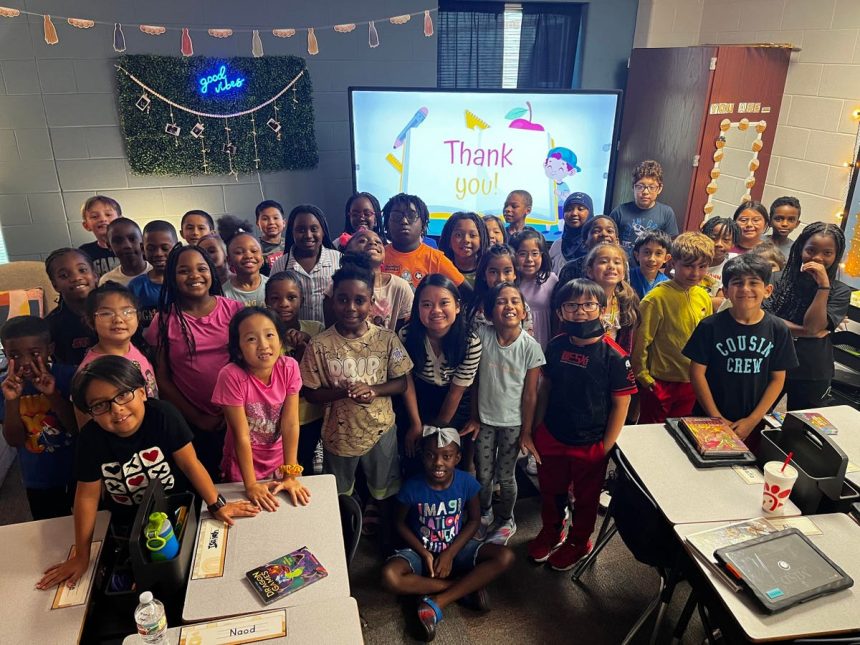The answer is YES. Both. Here’s why.
Hannah Le turns 18 this week. She’s a senior in high school choosing between college acceptance offers from Cornell and the Honors College at the University of Texas in Austin.
And she’s a self-made financial literacy instructor.
She has taught more than 500 elementary school children at 9 different schools through a curriculum of her design that features interactive exercises, including the following topics:
- Needs vs. Wants
- Human Capital: Skills, Education and Experience
- Earning and Spending
- Forms of Payment
- Types of Financial Accounts
- Savings and Budgeting
- Income, Expenses, and Profit
Hannah sits with kids between the second and fourth grade, showing them visuals of a house, a winter coat, and movie tickets and asking them whether these items are needs or wants. She’s simplifying the complexity of personal finance to students whose minds are even more porous at this tender age. And she’s covering nearly all the general topics that would be part of any adult financial literacy course.
Why in the world would a high school senior who should be more concerned with finding a major—or a prom date—call up elementary school teachers to ask if she can share her financial wisdom with their classes? I asked her.
She told me a short story from her junior year in high school (so long ago) when she was doing an internship near her elementary school alma mater. She decided to walk in one day, just to thank her favorite fourth-grade teacher.
Hannah noticed some building blocks in the classroom and some toy coins, and upon reflection, it sparked some memories.
She remembered how much weight she’d felt as a first-generation American, responsible for guiding her family in the college preparatory journey. She’d started asking a lot of questions about everything from basic budgeting to taxes to FAFSA—questions that all of us eventually face but many of us never ask. Then, she began sharing her summary learnings with her friends and classmates, who were subsequently going home to educate their own parents.
And when she saw those toy coins in the fourth-grade classroom, she was reminded of her own curiosity at that age—and thought, “Wouldn’t it be great if I could teach the financial basics to these kids so they may be better prepared to face future financial challenges?”
She thought she could, and her teacher agreed. And then a bunch more teachers agreed. And now, an extended family of a couple of thousand people know more about money than they likely would have if Hannah kept to herself.
It took a motivated high school senior to make that happen. (That it wouldn’t have otherwise is an implicit indictment of the “financial literacy movement,” BTW.)
The antiquated argument that personal finance should be taught at home simply looks silly in 2024. The people who made that argument likely grew up in a world where Mom and Dad only had to explain what a paycheck and a checkbook were—or they were academics with pet projects that didn’t include a personal finance course in their core curriculum at the university. They were the folks who said personal finance didn’t rank any higher than that extinct academic species that has gone the way of the Dodo: home economics.
That was before 401(k)s, 403(b)s, TSAs, TSPs, 457s, SEPs, Simples, deductible IRAs, non-deductible IRAs, Roth IRAs, Roth 401(k)s, Conversion Roth IRAs, FAFSA, and the Alternative Minimum Tax, just to name a relative few of the new financial wrinkles that have hit the scene post “Leave It To Beaver.”
Yes, kids will be better off if their parents are financially skilled and knowledgeable and teach them those lessons early and often. And yes, financial complexity has reached such dizzying proportions—and it changes so often—that we can’t rely on parents alone to know and retain all those details.
Hannah Le has proven that there is both a demand and a method for connecting with kids in elementary school. Why not have at least one required personal finance class at the elementary school level, the high school level, and then especially at the college level, so that those students who are being prepared to change the world also know how to manage the highly touted post-graduation salaries they are being educated to earn?
Now, I know what you’re really thinking: How can I contract Hannah Le for hire following her collegiate career? Well, get in line!
*Note: Hannah reached out to me to tell me this story in hopes that it would inspire others to replicate her behavior or join her cause. I also spoke with Hannah’s mother to be sure I had the family’s blessing to feature Hannah’s story. She gladly consented. I mean, what parents among us don’t want to hear other people say great things about our kids?
Read the full article here
















